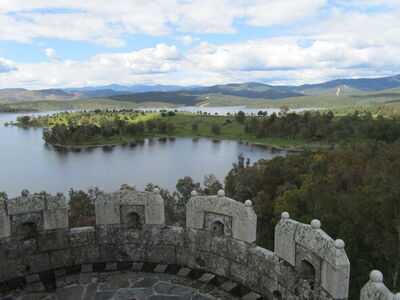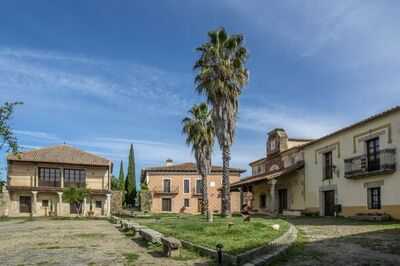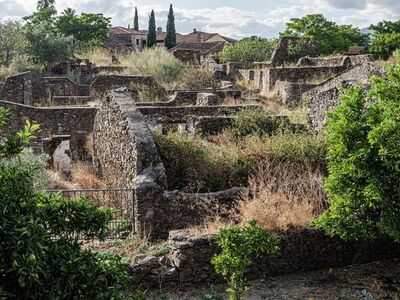Tucked away in the hills of Extremadura, western Spain, the walled town of Granadilla stands as one of the country's most haunting ghost towns - a medieval settlement that was abandoned almost 70 years ago after a blunder by Fascist dictator Francisco Franco.
Founded in the 9th century by the Moors and originally known as Granada, it became an important defensive outpost along Spain's historic Vía de la Plata trade route. After the Christian reconquest, the town was renamed Granadilla, meaning "little Granada", to distinguish it from the southern city of the same name. Surrounded by thick stone walls and crowned by a 15th-century castle built by the Dukes of Alba, Granadilla once served as the capital of its district. However, in 1955, under the rule of General Franco, residents of Granadilla were told they had to leave.

The Spanish government had ordered the creation of the Gabriel y Galán Reservoir, a massive dam project designed to bring water to the region. Officials warned that the rising waters would submerge the town, and families were forced to pack up their homes and relocate to nearby villages. Between 1959 and 1969, 1,000 residents were evicted, with many not receiving compensation until 1973.
However, the water never reached Granadilla. The town, perched safely on a peninsula above the floodplain, remained dry. The water level around Granadilla did rise, and for two years, it became an island, but the town was never submerged. Yet by the time engineers realised the mistake, the evacuation had already been completed, and the government refused to allow residents to return.
After the last residents left in the 1960s, Granadilla fell into decay. In 1980, it was declared a Historic-Artistic Site, sparking decades of careful restoration. The Spanish Government launched a youth program in the 1980s, allowing students and volunteers to help rebuild and maintain the town.
Despite all this, Granadilla remains uninhabited to this day. Now, instead of children playing and neighbours catching up in the streets, it is more often frequented by tourists who are free to explore its houses and climb the castle tower for panoramic views of western Spain.

Former residents and their families often return for annual gatherings, keeping the memory of their lost village alive. Many still express hope that one day, Granadilla could once again become a place to live.
One of the former residents who has been fiercely campaigning for years to bring back residents to Granadilla claimed the town experienced a "Greek tragedy". Eugenio Jimenéz, president of the Sons of Granadilla association, told the BBC: "I'll always believe that what we went through in Granadilla was a Greek tragedy, because the living were pushed out and the dead were denied the right to sleep in their village forever.
"It was a travesty. They kicked us out, claiming the dam would flood the town, which was impossible because the town is higher than the dam.
"But those were times of dictatorship and we had no rights. But what truly frustrates me is that during democratic times, I have been struggling for the recovery of Granadilla with the former children's association and no government has listened to us."
Mr Jimenéz wishes to be buried in Granadilla when he dies: "The only way I'll be able to return to my village would be when I pass away. In the place where I grew up, I'll sleep forever."
You may also like

One of the best World War 2 action movies based on a true story is on TV this weekend

Sajad Lone urges Congress to stop backing 'BJP proxies' NC, PDP

PKL 12: Patna Pirates beat U Mumba in Play-in 2, to face Pink Panthers in Eliminator 1

Royal insider gives interesting verdict on Prince George's future education

NFR converts holding areas into passenger-friendly zones for safe festive travel







